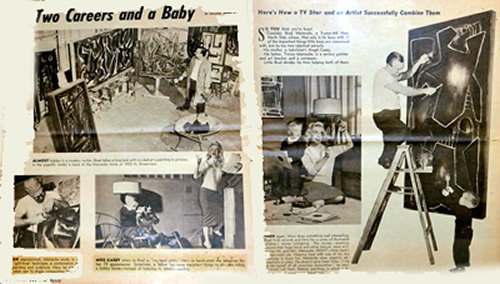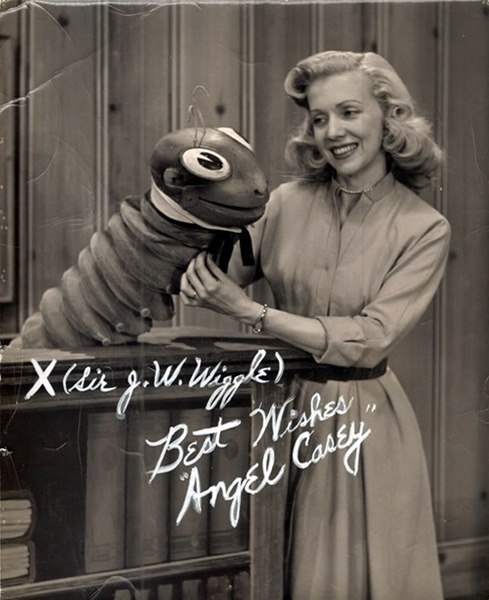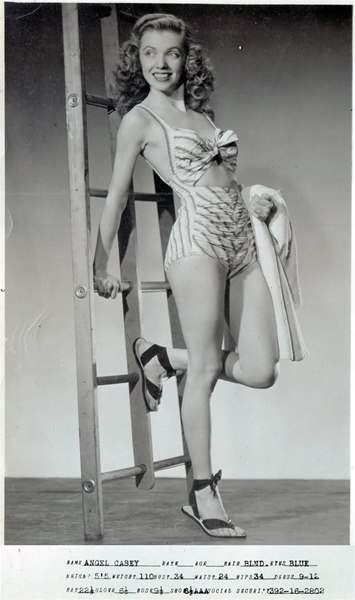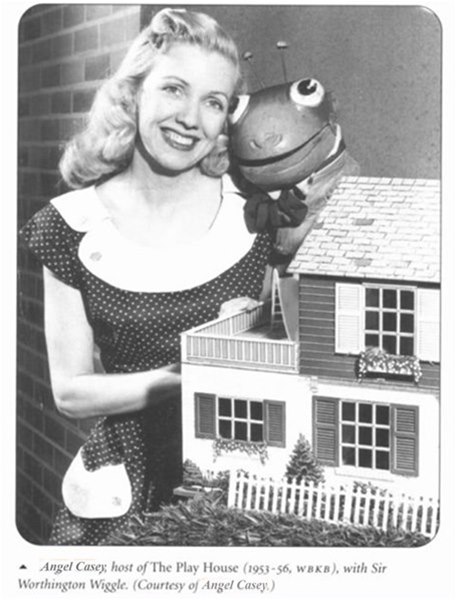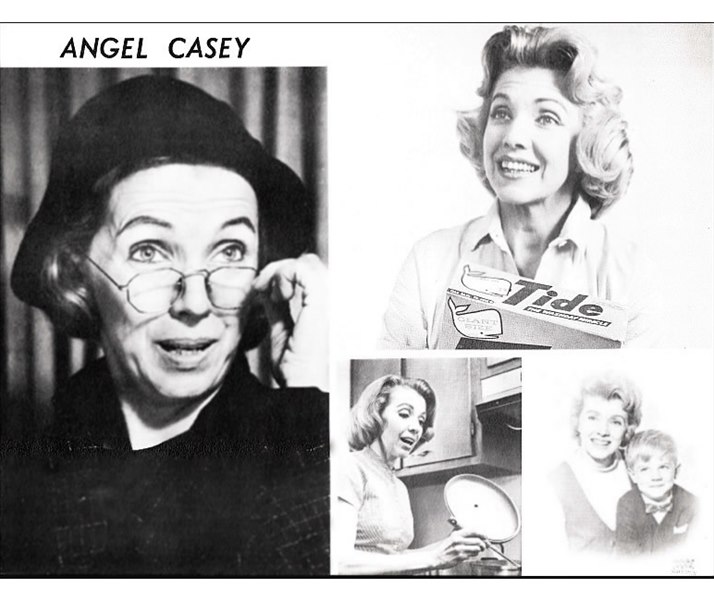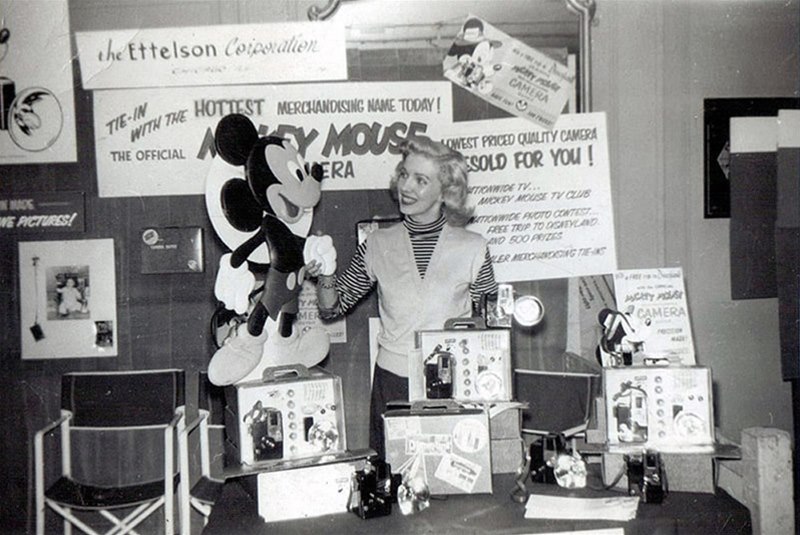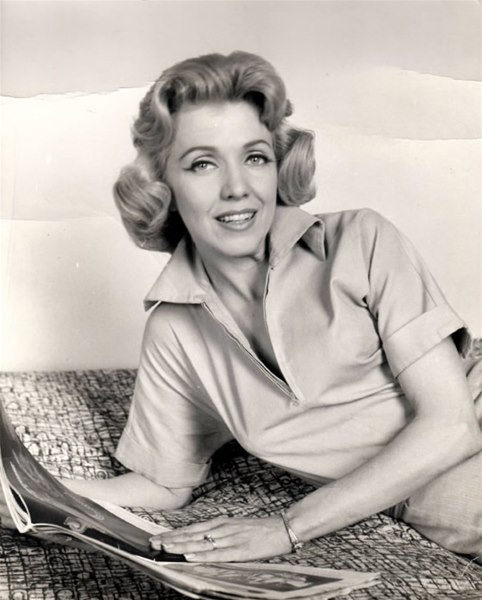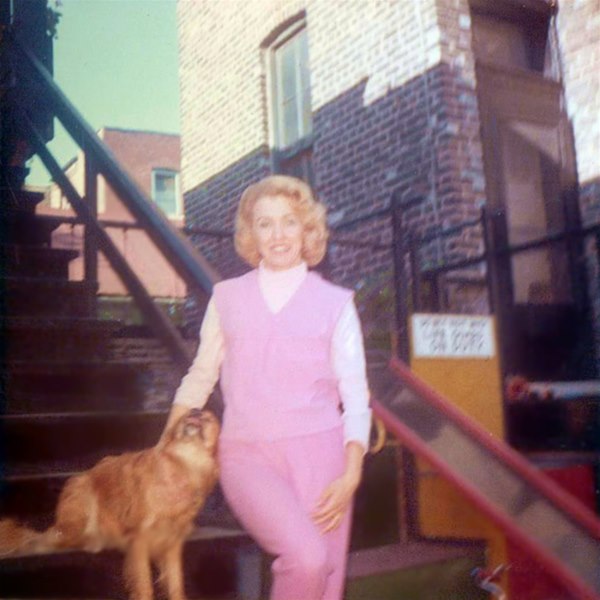The Hidden History of Angel Casey by C.V. Eidson |
Born
in Middleton, Ohio, Angel Casey showed an early interest in stage
performance. She danced and sang with her father in amateur minstrel
shows, and by the age of 10 had also danced at a performance of the
Cincinnati Symphony Orchestra. After graduating from the Cincinnati
Conservatory, she moved to Chicago and began her work as an actress in
advertising, both for print and radio.
 |
| Angel on the radio at WIBA (left), in Life Magazine (August 27, 1945) (right) (Estate of Angel Casey) |
At one point during the late 40s, she had regular roles on six different
radio shows at once, each which broadcast live with no tape delay, five days
a week, 52 weeks a year. She was widely respected by radio colleagues, both for her work
ethic and for a verbal agility which helped other performers cover up the occasional flub. By 1948, she had also appeared on WGN-TV which went live on April 5th of that year.
By 1952, her work in radio and TV dramas included the programs Road of Life, Woman in White, Hawkins Falls, Author's Playhouse, Easy Money, Shoot the Works, and Attorney Speaks.
Among the famous names with whom she worked include Dean Martin and
Jerry Lewis, Orson Wells, Burns and Allen, Spike Jones, Dave Garroway,
Kent Taylor, and Gig Young. Her television programs included parts in Author's Playhouse, Stump the Authors, Jury Trials, Penthouse Players, States Attorney Speaks, and her own shows, Laugh Time, Hail the Champ, The Play House, and Sun Times Quiz Down.
She co-hosted the final season of Chicago station WBKB's Hail the Champ with Howie Roberts in 1952. After this, WBKB offered Angel her own show, The Play House, over which she had considerable creative control.
The Play House showcased music through songs and recordings.
Angel also narrated stories and worked on projects for the "Things to
Do or Make" portion of the program. And she served as a foil for a
voiceless bookworm puppet named Sir Worthington Wiggle, who would
whisper into Angel's ear as she related the conversation to viewers - a
concept which Angel had herself created, and successfully pitched
it to producers. Puppeteer Bruce Newton later created another character,
Squawky Duck.
"I was on the show every day,", recalls Newton. "I don't think Angel ever missed a day either. We all contributed copy for the show, crafts, visuals, scripts, and guest suggestions. We did this from the debut on December 28, 1953 until the show went off the air on August 31, 1956."
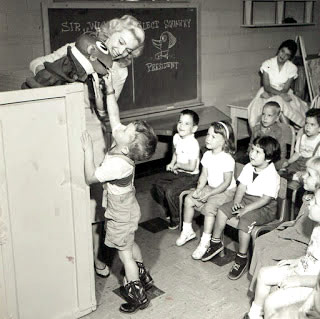 |
| A live remote in which Angel and puppeteer Bruce Newton guided kids through a mock election. (Estate of Angel Casey) |
The Play House was contemporary with
other children's shows involving puppetry such as Howdy Doody and Kukla,
Fran, and Ollie. But it only existed for three years, 1953-1956, during
a time when local TV was broadcast live, and if taped, was immediately
taped over. All we have today are TV Guide listings, press clippings,
photographs from promotional shots and live remotes, and the written
accounts of people who worked on or watched the show.
We know from a local news article that The Play House was
apparently the first show to give children instructions on how to call
emergency services - a young boy called the fire department to his house
just to see if it would work. In this, in her insistence on the use of
classical rather than "children's music", and in other ways, Angel
showed in her creative direction that she saw children as having
individual agency and the potential to learn things of real consequence.
In 1956, Angel Casey did a series of promotional photos featuring a racially diverse group of children. This would have been a prelude to including children of color on the live broadcast of her show. And it was a move that was congruent with the way Angel and her artist husband, Tristan Meinecke, lived their lives. Tristan, who'd spent his first few years in Chicago playing music in predominantly black jazz clubs, would invite black acquaintances to parties at the couple's home, rent to black tenants over strident objections from the neighborhood, and would respond to anyone who criticized him on the topic by essentially daring them to make an issue of it. Angel, in the summer of 1956, without bluster or fanfare, simply did what she thought was right.
Later news coverage of Angel Casey would refer in general terms to her local stardom, but focused on her and her husband's glamorous lifestyle. This served as a kind of re-branding that allowed her to find other, independent work, and also to promote her husband's art, which continued to be a variable but significant source of income. The public still considered her a star, but this status never again translated into a leading role in television or radio. Her later career included a few TV commercials and the occasional movie bit part, bolstered by a mix of print advertising, radio advertising, personal appearances, and teaching classes on topics such as fashion and nutrition at local "finishing schools" for women such as the Patricia Vance Modeling Agency and Charm School.
Angel Casey was a terrific entertainer. She was diligent and innovative in large measure. But she took a calculated risk, she tried to use her platform to make television more inclusive - and she lost.
Angel's local fame, along with her and her husband's financial independence meant she lost only the momentum of her career, not her life - as some of those anonymous letter writers would have preferred.
The existence of The Play House was brief and its impact on later Chicago children's television debatable. Yet I believe its run would not have been so brief, nor would it have been the last major production she headlined, had it not been for the intolerance of her peers and the powers that were.
With the benefit of hindsight, I believe Angel Casey deserves to be remembered, as an outstanding Chicago actress and seminal television star, but more importantly, as a person who refused to compromise her values. Because of her values, she tried and failed to integrate a popular children's television show in 1956. We believe that is an historic first! She swung for the fences, struck out, and forged on undaunted, her integrity unmarred.
That was Angel Casey, a shining star who fell to earth and stayed with us for a little while. Along with her husband Tristan, she never gave up, never gave in, and never, ever surrendered her values or anything else for that matter, other than, according Angel: her heart for God, her husband and her children.
Thank you for visiting. If you enjoyed Angel's website, tell her story! |
Written by C.V. Eidson -- A version of this story was originally published by
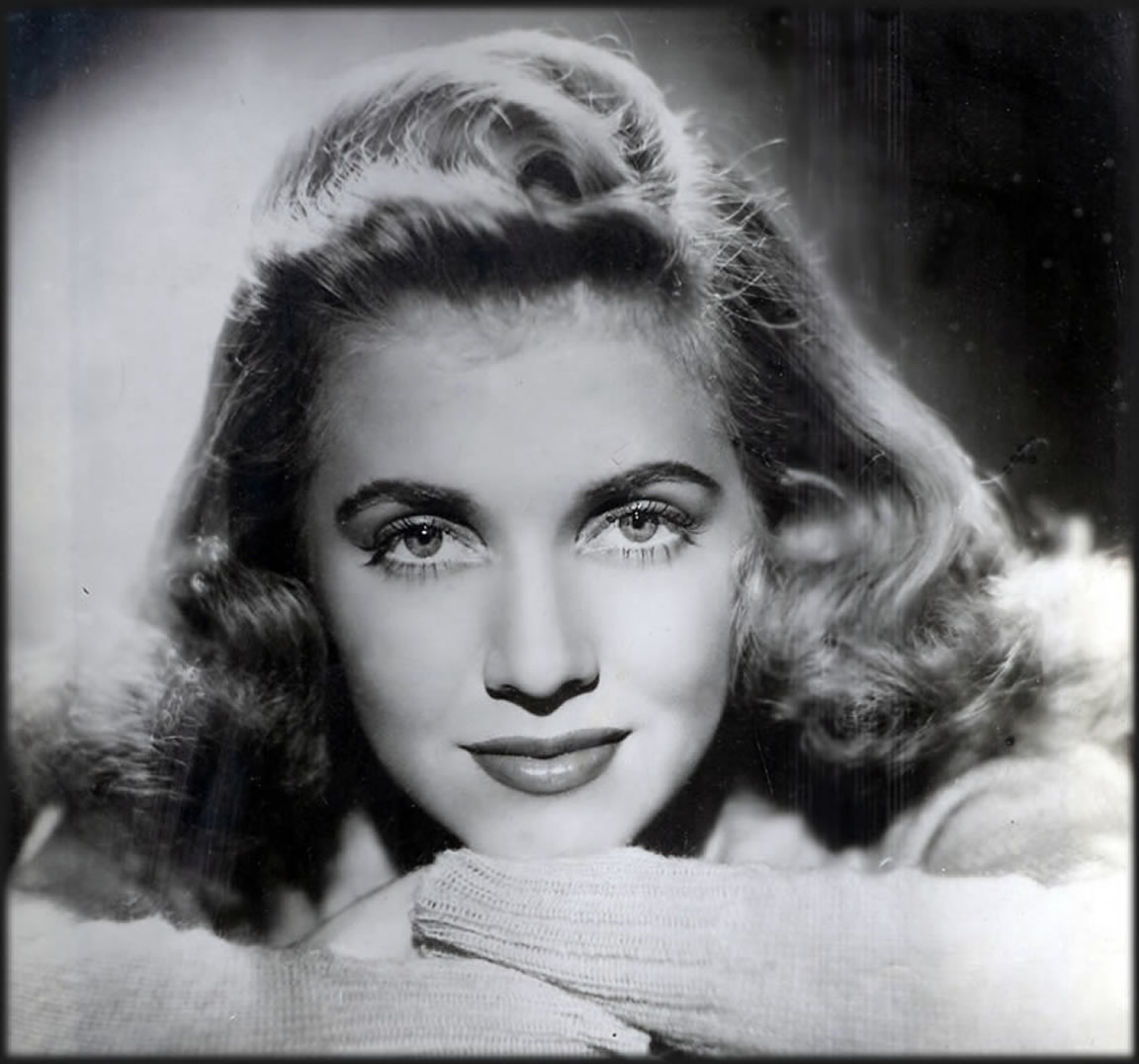
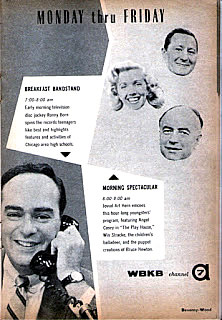

![Irving Kupcinet (July 31, 1912 – November 10, 2003) was an American newspaper columnist for the Chicago Sun-Times, television talk-show host, and radio personality based in Chicago, Illinois. He was popularly known by the nickname "Kup". Irving Kupcinet (July 31, 1912 – November 10, 2003) was an American newspaper columnist for the Chicago Sun-Times, television talk-show host, and radio personality based in Chicago, Illinois. He was popularly known by the nickname "Kup".
His daily "Kup's Column" was launched in 1943 and remained a fixture in the Sun-Times for the next six decades.[1]](images/Kups.jpg)
